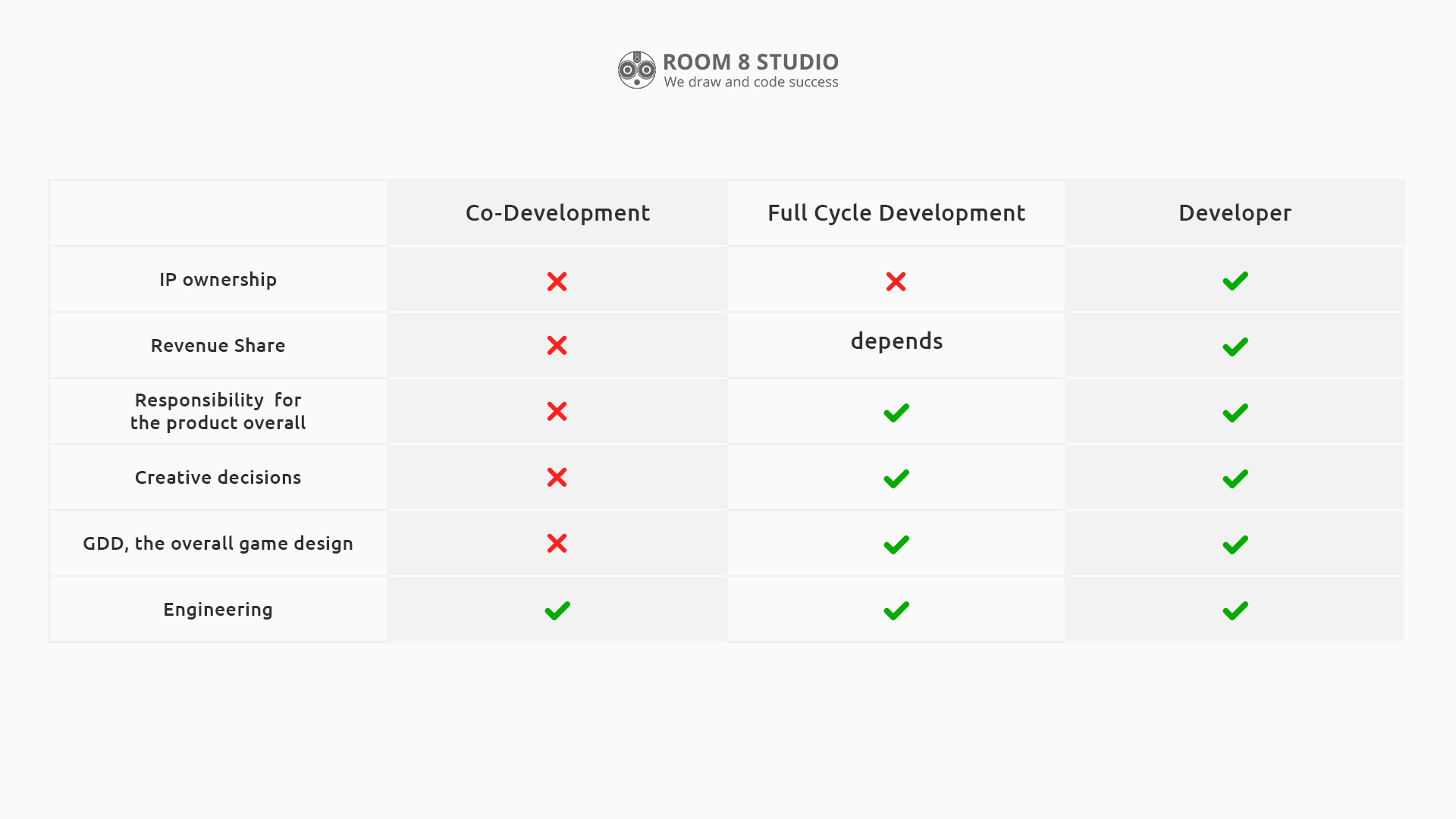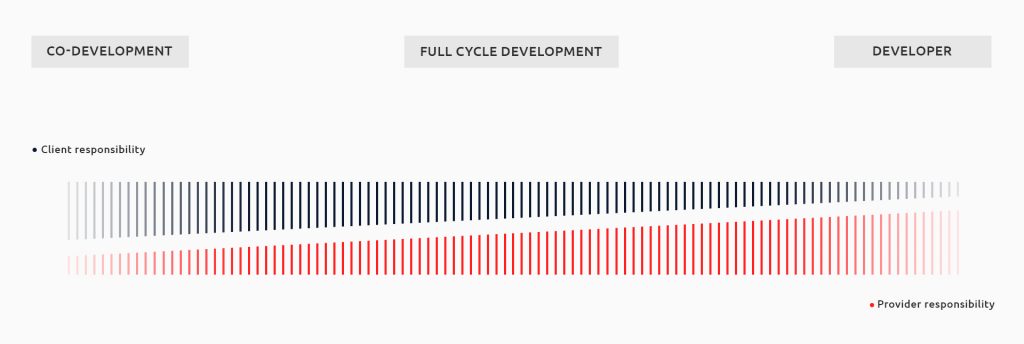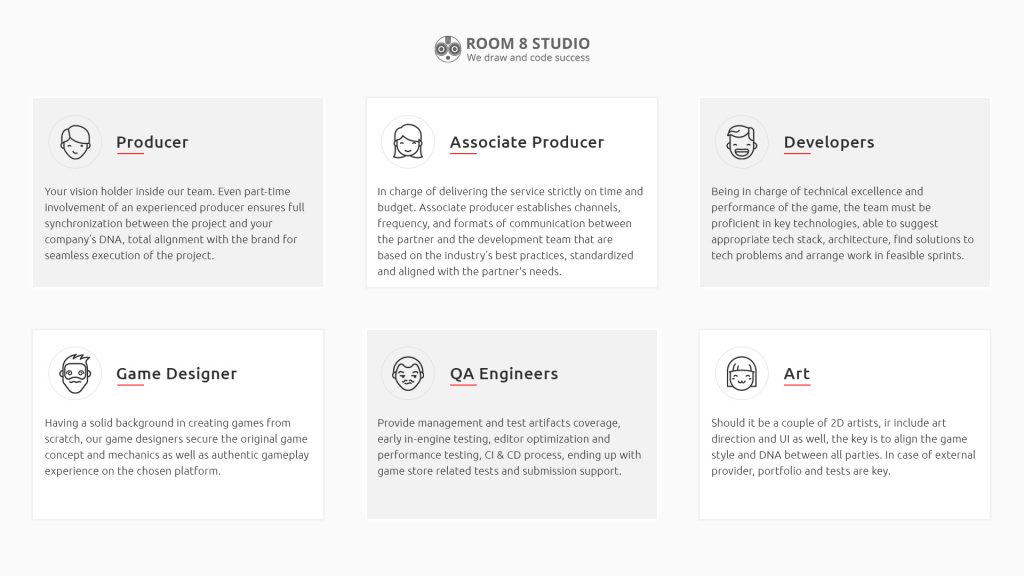External Full Cycle Mobile Game Dev: How To Scale Right
With the mobile game market’s unstopping growth every year, more and more developers and publishers turn to external providers for end-to-end game development. According to the XDS report 2019, the top reasons for engaging external service providers in all areas of game development are the need to build more content and skills set ramp-up, both holding top positions for several years straight.
But what about going full-cycle? How to get ideas to production, and what are the differences compared to existing cooperation models? Let’s dive into the topic.
Business Model: Full Cycle Provider vs Co-Dev Partner vs Developer
There are a few models of cooperation popular between publishers, publishers/developers, and external game development providers. Which one will be more beneficial for the client? It all depends on one’s goals.
In the table below, you can see the comparison between the most widespread models.

Co-development is excellent for experienced developers and those who know for sure what parts of the project they need to outsource and have clear expectations. In this case, the client’s responsibility for the overall project quality remains.
On the other hand, when going full cycle, the responsibility partly shifts to the external provider since they manage the creation and cultivation of the idea through pre-production game design and prototyping to successful game launch. This way, the client engages expertise in multiple genres and development approaches of the game development provider, can scale up/down easily, and mitigate risks in case of pilot projects while keeping IP entirely on his side.
Publisher-developer relationships usually mean sharing revenue and creative control.

How To Pick An External Provider For Full Cycle
“Judging from our experience, clients often search for a provider that has similar genre experience to what they want to create”, says Svetlana Savitskaya, Head of Games Division at Room 8 Studio. “But, since every game out there is different in its unique way, you might want to check a number of other things before picking the right full-cycle partner to build your next game.”
So, what are the key things to assess when selecting your full-cycle partner to create a mobile game?
- Creative approach. Building a game end-to-end involves ideas generation and commitment of all parties into a sometimes painfully hard process of their polishing. Check the ideas your future partner generates to ensure your DNA match.
- Product expertise. Providing a team-for-hire is a very different thing from creating a game from scratch and launching it. To ensure the game development provider is ready for such a responsibility and has proper market understanding, check if the vendor of choice has the experience of launching their own games.
- Game economy expertise. Monetization is vital for any game, especially ones that offer new or complex mechanics: check successful cases and overall approach to game balancing. Talk it through before kick-off.
- Possibility of live-ops content support. Changing the team on the fly is never risk-free, so it’s more efficient to opt for long-term cooperation. To ensure smooth live ops, check if the partner’s available to continue working on the game after the launch.
- IP. If you want to keep the full rights on your game, check famous IPs in the vendor’s portfolio. Apart from the legal side, it is always safer to ensure the reliability of the partner this way.
- Methodology. Agile has become the most widely used methodology for software development. Check the development plan, risks mitigation, acceptance criteria and QA in the proposal.
“Most of our clients need end-to-end support, including art & animation, especially for full-cycle projects,” says Svetlana Savitskaya, Head of Games Division at Room 8 Studio. “We have proven communication pipelines between art, animation, and dev teams to make sure they exchange assets and ideas quickly.”
External Team Composition
At the project discussion stage with a potential new partner, please pay attention to the team composition they plan to establish. Since the team will be responsible for the overall game quality, they should have needed creative, tech, and executive people on board who know market needs and can manage the team accordingly.

Before starting the project, the team proposes or cultivates the idea, puts it into the concept, and approves with the client, suggesting a preliminary estimate and delivery timeline. After the consensus is found, the pre-production team creates GDD and prototype, further refining the scope and delivery timeline, and makes a final production estimate.
So, the full-cycle game development model does offer quite a few advantages, the main being an excellent opportunity to test the waters and launch quickly while keeping the IP.
Further reading:
- Top Reasons to Hire an External Development Team for Your Game
- Game Dev Roles that Define the Success of Any Title
Have a project in mind? Let’s talk!



